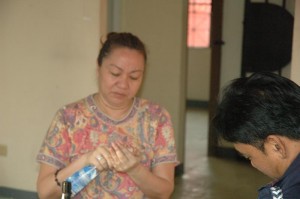Brace for colder days and nights as the hangin amihan (the cool northeast wind, known as the northeast monsoon) prevails over the country.
Temperatures could start dropping as low as 15 degrees Celsius in Baguio City and 22 degrees Celsius in other parts of Luzon, said the Philippine Atmospheric, Geophysical and Astronomical Services Administration (Pagasa).
The weather bureau said high-pressure areas over China have shifted the wind direction over Luzon, from the habagat (southwest wind or southwest monsoon) to the amihan, “bringing cold and dry air over the northern part of the country.”
The main indicator of the switch in seasonal pattern from the habagat or southwest monsoon season (characterized by hot and humid weather, frequent heavy rainfall and a prevailing wind from the west) to the amihan or northeast monsoon is the “the lowering of the minimum temperature observed over the extreme Northern Luzon.”
Pagasa said this signifies the start of the northeast monsoon season, characterized by moderate temperatures, little or no rainfall, and a prevailing wind from the east.
It said colder early morning temperatures are to be expected in the coming days and months over Luzon, with the chance of light rain over the northern and eastern sections.
Weather conditions over the rest of the country will be generally fair apart from isolated rainshowers or thunderstorms in the afternoon or evening, Pagasa said.
Meanwhile, forecaster Jun Galang said a tropical cyclone could enter the Philippine area of responsibility (PAR) by Monday but which could be expected to follow the track of Typhoon “Tino,” which passed through the PAR without much effect on the country.
Galang said Tropical Storm “Francisco” is hovering somewhere in the far east of the country over the Pacific Ocean, in the area of the Marianas Islands.
Francisco has maximum sustained winds of 130 kilometers per hour near the center and gustiness of up to P150 kilometers per hour. It is moving northwest slowly.


